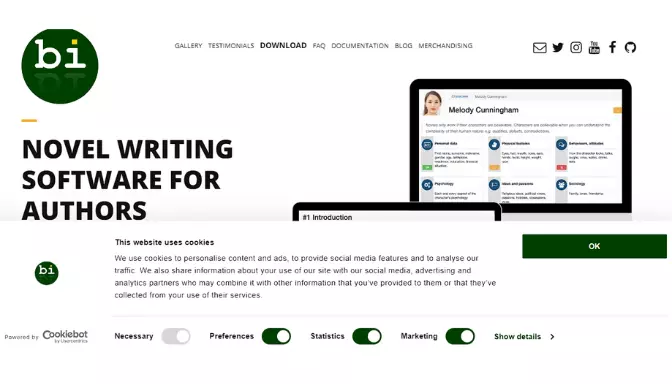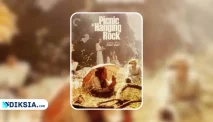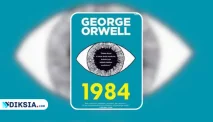Diksia.com - Do you have a story idea that you want to turn into a novel? Do you need help with developing your characters, plotting your story, and organizing your chapters? Do you want to use a novel writing software that is easy to use, affordable, and powerful?
If you answered yes to any of these questions, then you might want to check out bibisco, a novel writing software that helps writers to write their story, in a simple way.
bibisco is a desktop application available for Linux, macOS and Windows, in 15 languages. It provides all the features and tools you need to draft, refine, and share your story with ease. In this article, we will show you how to write a novel with bibisco in 12 steps.
Step 1: Pick a story idea with novel potential
Every novel starts with an idea. It can be anything that sparks your imagination: a character, a setting, a theme, a conflict, a question, or a premise. The idea should be something that interests you and makes you curious to explore it further.
To find a good story idea, you can:
- Read books, articles, blogs, magazines, or newspapers for inspiration
- Watch movies, TV shows, documentaries, or videos for inspiration
- Listen to podcasts, music, or audiobooks for inspiration
- Observe people, places, events, or situations around you for inspiration
- Use writing prompts, generators, or exercises for inspiration
Once you have an idea, write it down in one sentence. This will help you to clarify what your story is about and who your main character is. For example:
- A judge tries a man for a murder the judge committed
- A woman steals a wallet from a public bathroom and faces unexpected consequences
- A boy befriends a kite runner in Afghanistan and witnesses the rise of the Taliban
Make sure your idea has novel potential. This means that it is:
- Original: It is not a copy or a cliché of another story
- Engaging: It hooks the reader’s attention and makes them want to know more
- Conflict-driven: It involves a problem or a challenge that the main character has to overcome
- Character-driven: It shows how the main character changes or grows throughout the story
- Theme-driven: It conveys a message or a lesson that resonates with the reader
Step 2: Develop your main character
Your main character is the protagonist of your story. They are the one who drives the plot forward and who faces the central conflict. They are also the one who connects with the reader emotionally and makes them care about what happens.
To create a believable and memorable main character, you need to:
- Give them a name, age, gender, appearance, and background
- Give them a personality, motivation, goal, flaw, and arc
- Give them strengths, weaknesses, skills, hobbies, and interests
- Give them relationships, allies, enemies, and love interests
- Give them voice, dialogue style, and point of view
bibisco helps you to develop your main character by providing you with a comprehensive character questionnaire. You can answer questions about your character’s physical traits, psychological traits, social traits, personal history, conflict, evolution, and role in the story.
You can also use mind maps to determine relations between your main character and other story elements.
Step 3: Establish a central conflict and stakes
The central conflict is the main problem or obstacle that your main character has to face and overcome in order to achieve their goal. It is what creates tension and suspense in your story and what keeps the reader invested in the outcome.
The stakes are the consequences of what will happen if your main character fails or succeeds in resolving the central conflict. They are what makes the reader care about the outcome and what gives your story meaning and impact.
To create a compelling central conflict and stakes for your novel, you need to:
- Identify the antagonist or the opposing force that stands in your main character’s way
- Identify the internal and external conflicts that your main character has to deal with
- Identify the personal and universal stakes that your main character has to face
- Make sure the conflict and stakes are clear, relevant, escalating, and satisfying
bibisco helps you to establish your central conflict and stakes by providing you with a novel structure tool. You can use it to define the premise, fabula, and narrative strands of your story. You can also use it to outline the main events and turning points of your plot.
Step 4: Write a logline or synopsis
A logline is a one-sentence summary of your novel that captures the essence of your story. It usually includes the main character, the central conflict, and the stakes. For example:
- A young wizard must stop an evil lord from conquering the world with a powerful artifact
- A teenage girl volunteers to take her sister’s place in a televised death match in a dystopian society
- A man with short-term memory loss hunts for his wife’s killer using tattoos and notes as clues
A synopsis is a longer summary of your novel that covers the main plot points and character arcs. It usually includes the main character, the central conflict, the stakes, the inciting incident, the rising action, the climax, the falling action, and the resolution. It is usually written in present tense and third person.
Writing a logline or synopsis can help you to:
- Test your story idea and see if it works
- Clarify your story structure and direction
- Pitch your story to agents, publishers, or readers
bibisco helps you to write a logline or synopsis by providing you with a novel analysis tool. You can use it to review your novel structure, characters, locations, points of view, time, and chapters. You can also use it to export your novel in pdf, docx, or epub format.
Step 5: Structure your plot
Your plot is the sequence of events that make up your story. It is how you arrange and present your story elements to create a satisfying and coherent narrative. It is also how you build and release tension and suspense in your story.
To structure your plot effectively, you need to:
- Follow a basic plot structure, such as the three-act structure, the hero’s journey, or the snowflake method
- Divide your plot into chapters and scenes that move your story forward
- Use hooks, cliffhangers, twists, and surprises to keep your reader engaged
- Balance action, dialogue, description, exposition, and reflection in your scenes
- Show rather than tell what happens in your scenes
bibisco helps you to structure your plot by providing you with a chapter and scene management tool. You can use it to create, edit, move, and delete chapters and scenes. You can also use it to write with a fully-featured text editor in distraction-free mode.
Step 6: Pick a point of view
Your point of view is the perspective from which you tell your story. It determines who is narrating the story and how much they know and reveal. It also affects how you write your voice, tone, and style.
To pick a point of view for your novel, you need to:
- Choose between first person (I), second person (you), or third person (he/she/they)
- Choose between limited (one character’s thoughts and feelings) or omniscient (multiple characters’ thoughts and feelings)
- Choose between past tense (he said) or present tense (he says)
- Choose between reliable (trustworthy) or unreliable (untrustworthy) narrator
- Choose between single (one narrator throughout) or multiple (different narrators for different chapters or scenes) narrator
bibisco helps you to pick a point of view by providing you with a point of view analysis tool. You can use it to analyze the use of point of view in each chapter and scene. You can also use it to check for consistency and coherence in your narration.
Step 7: Choose a setting that benefits your story
Your setting is the time and place where your story takes place. It includes the historical period, the geographical location, the cultural context, the social environment, and the physical environment of your story.
To choose a setting that benefits your story, you need to:
- Pick a setting that suits your genre, theme, and mood
- Pick a setting that influences your plot, characters, and conflict
- Pick a setting that creates contrast, conflict, or symbolism
- Pick a setting that is vivid, specific, and realistic
- Pick a setting that is relevant, necessary, and interesting
bibisco helps you to choose a setting by providing you with a world-building tool. You can use it to create and describe locations that are important for your story. You can also use it to bring your characters, locations, and story’s setting to life and create an immersive experience for readers.
Step 8: Establish a writing routine
A writing routine is a set of habits and practices that help you to write regularly and productively. It includes when, where, how long, and how much you write each day or week.
To establish a writing routine that works for you, you need to:
- Set realistic and achievable writing goals
- Schedule specific and consistent writing times
- Find a comfortable and distraction-free writing space
- Track your writing progress and reward yourself
- Experiment with different writing methods and tools
- Seek feedback and support from other writers
bibisco helps you to establish a writing routine by providing you with a writing goals tool. You can use it to set your words goal, your words per day goal, and your deadline. You can also use it to track the progress of your work over time.
Step 9: Shut out your inner editor
Your inner editor is the critical voice in your head that tells you that your writing is not good enough, that you need to fix every mistake, and that you should give up. It is the voice of doubt, fear, and perfectionism that hinders your creativity and productivity.
To shut out your inner editor while writing your novel, you need to:
- Accept that your first draft will be imperfect and that you can improve it later
- Focus on getting your ideas down rather than polishing every sentence
- Write fast and freely without stopping to edit or revise
- Embrace mistakes, errors, and gaps as opportunities for learning and growth
- Silence negative thoughts and affirm positive ones
bibisco helps you to shut out your inner editor by providing you with a distraction-free mode. You can use it to write without any distractions or interruptions. You can also use it to enjoy the process of writing and express yourself freely.
Step 10: Revise and rewrite your first draft
Revising and rewriting your first draft is the process of improving your novel by making changes to its content, structure, style, and language. It involves reading, evaluating, editing, and rewriting your novel until it reaches its best possible form.
To revise and rewrite your first draft effectively, you need to:
- Take a break from your novel and gain some distance and perspective
- Read your novel as a reader and identify its strengths and weaknesses
- Use feedback from beta readers, critique partners, or editors to guide your revisions
- Work on one aspect of your novel at a time, such as plot, characters, setting, point of view, or dialogue
- Use tools such as grammar checkers, spell checkers, or readability checkers to polish your language
bibisco helps you to revise and rewrite your first draft by providing you with a revision management tool. You can use it to create, edit, move, and delete revisions. You can also use it to compare different versions of your novel and see how it has changed over time.
Step 11: Share it with your first readers
Sharing your novel with your first readers is the process of getting feedback from people who read your novel for the first time. They can be friends, family members, fellow writers, beta readers, critique partners, or editors. They can help you to improve your novel by giving you honest opinions, suggestions, and criticisms.
To share your novel with your first readers successfully, you need to:
- Choose readers who are familiar with your genre, target audience, and writing goals
- Choose readers who are supportive, constructive, and respectful
- Choose readers who are willing, available, and reliable
- Give readers clear instructions on what kind of feedback you want and how to give it
- Receive feedback with gratitude, openness, and curiosity
bibisco helps you to share your novel with your first readers by providing you with an export tool. You can use it to export your novel in pdf, docx, or epub format. You can also use it to share your novel via email, social media, or online platforms.
Step 12: Publish your novel
Publishing your novel is the process of making your novel available to the public. It involves choosing between traditional publishing or self-publishing, preparing your manuscript for publication, and marketing and promoting your novel.
To publish your novel successfully, you need to:
- Research the pros and cons of traditional publishing and self-publishing
- Research the market trends, demands, and opportunities for your genre and audience
- Research the agents, publishers, or platforms that suit your needs and preferences
- Prepare a query letter, a book proposal, or a book description for submission or publication
- Prepare a cover design, a book format, or a book price for publication
- Prepare a marketing plan, a launch strategy, or a promotion campaign for publication
bibisco helps you to publish your novel by providing you with a professional editing tool. You can use it to edit your novel according to the standards and guidelines of the publishing industry. You can also use it to ensure that your novel is error-free, consistent, and ready for publication.
Conclusion
Writing a novel is a rewarding and fulfilling experience that anyone can achieve with the right tools and guidance. bibisco is a novel writing software that helps writers to write their story in a simple way. It provides all the features and tools you need to draft, refine, and share your story with ease.
If you want to write a novel with bibisco, you can download it now and start your novel writing journey today!






